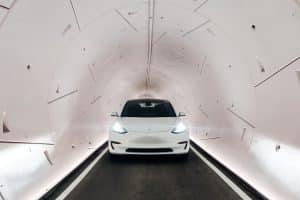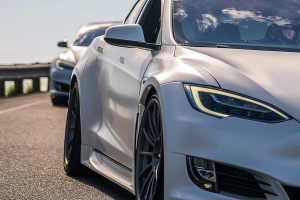- 🚗 A Tesla driver in Arizona had her license revoked after passing her driving exam because the tester thought she used Full Self-Driving (FSD) features.
- ⏳ The State’s Department of Transportation initially issued the license but revoked it due to suspicions related to braking habits associated with Tesla’s regenerative braking.
- 🛑 The DMV feared the vehicle was performing actions automatically, which raised concerns about the driver’s ability to operate non-Tesla vehicles.
- 🚫 There were discussions about potentially banning Teslas from driving tests due to their advanced safety features.
- 🔄 This situation highlights ongoing misconceptions about Tesla’s capabilities and the potential need for revised testing procedures.
In an age where technology is rapidly advancing, the intersection of innovation and regulation can create unexpected challenges. The story of a young Tesla driver in Arizona, who had her newly acquired driver’s license revoked due to misunderstandings around Full Self-Driving (FSD) capabilities, sheds light on a broader issue: how do we integrate advanced vehicle technologies into traditional systems without disrupting them? Let’s delve into the nuances of this incident and explore the implications for Tesla drivers and the broader automotive industry.
Understanding the Incident
In Arizona, a Tesla Model Y was at the center of a controversy when a young driver passed her license test, only to have it revoked soon after. The issue stemmed from the driving examiner’s suspicion that the applicant used Tesla’s Full Self-Driving (FSD) feature during the test—a claim that brought to light several misunderstandings about Tesla technologies.
Misconceptions About Full Self-Driving
Full Self-Driving represents cutting-edge technology designed to assist users in driving with safety and ease. However, it does not nullify the need for a driver’s attention and manual intervention. The misunderstanding in Arizona arose from the assumption that because of Tesla’s regenerative braking system, the driver was not fully in control. Regenerative braking can reduce the need for manual braking, making brake pedal usage less frequent—though this feature does not automatically imply autonomous operation.
The Regulatory Perspective
Concerns from the Department of Motor Vehicles
- Automatic Actions: The Arizona DMV’s concern centered around automatic vehicle actions potentially undermining the evaluation of a driver’s manual capabilities.
- Driver Skills Assessment: There is a fear that a reliance on driver-assist technologies could overshadow a person’s basic driving skills, crucial for operating other vehicles that do not have such technology.
Potential Ban on Teslas in Driving Tests
The situation escalated to discussions about banning Tesla vehicles from driving tests. The advanced safety features, including FSD, are perceived as obstacles in assessing a driver’s true skill set—raising questions about fair practice and the technological literacy of existing evaluation protocols.
The Path Forward: Revising Driving Test Protocols
To harmonize technological advancements with regulatory practices, a few steps might be considered:
- Educating Examiners: Increased training and awareness around the functionalities of modern vehicles, like Tesla’s, would enable a fairer assessment.
- Updating Test Criteria: Adapt driving tests to consider vehicles with advanced technologies by explicitly testing both manual and assisted driving capabilities.
- Clear Communication Policies: Implementing clear guidelines and communication between car manufacturers and regulatory bodies to ensure comprehensive understanding among all stakeholders.
Implications for the Future
This incident is not isolated, but indicative of a growing trend where technology outpaces regulatory frameworks. The automotive industry stands at a crossroads, needing collaborative efforts to address these gaps. As Tesla and other companies continue to innovate, a modernized approach to driver testing and licensing will be crucial to ensuring both safety and technological advancement can coexist.
Embracing this change is vital—not just for regulatory bodies, but for consumers and stakeholders within the industry. By integrating technology into our evaluative frameworks, we hold the potential to transform how we perceive and utilize automotive advancements.





